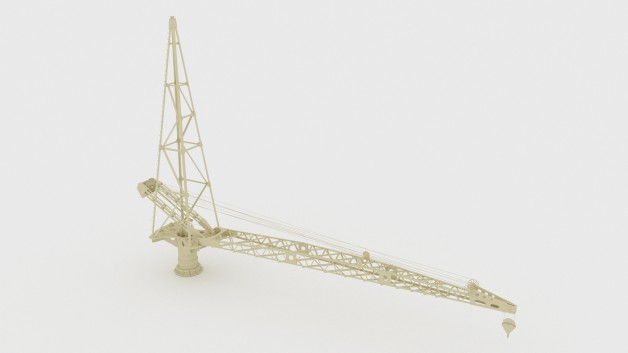
Vehicles
Download Free 3D Models. Discover a diverse collection of free 3D models, perfect for projects ranging from game design to 3D printing. Whether you're searching for models of cars, vehicles, or architectural elements, we offer high-quality assets such as 3D models for print, free models for cars, and a wide variety of other 3D designs. Our library includes everything from free studio models to resources for sketching up detailed projects, catering to both beginners and professionals alike. Download detailed 3D objects for free and explore options for car modeling, 3D printing, and more. Enhance your designs effortlessly with our free 3D modeling resources. A crane is a type of machine, generally equipped with a hoist rope, wire ropes or chains, and sheaves, that can be used both to lift and lower materials and to move them horizontally. It is mainly used for lifting heavy things and transporting them to other places. The device uses one or more simple machines to create mechanical advantage and thus move loads beyond the normal capability of a human. Cranes are commonly employed in the transport industry for the loading and unloading of freight, in the construction industry for the movement of materials, and in the manufacturing industry for the assembling of heavy equipment. The first known crane machine was the shadouf, a water-lifting device that was invented in ancient Mesopotamia (modern Iraq) and then appeared in ancient Egyptian technology. Construction cranes later appeared in ancient Greece, where they were powered by men or animals (such as donkeys), and used for the construction of buildings. Larger cranes were later developed in the Roman Empire, employing the use of human treadwheels, permitting the lifting of heavier weights. In the High Middle Ages, harbour cranes were introduced to load and unload ships and assist with their construction — some were built into stone towers for extra strength and stability. The earliest cranes were constructed from wood, but cast iron, iron and steel took over with the coming of the Industrial Revolution. For many centuries, power was supplied by the physical exertion of men or animals, although hoists in watermills and windmills could be driven by the harnessed natural power. The first mechanical power was provided by steam engines, the earliest steam crane being introduced in the 18th or 19th century, with many remaining in use well into the late 20th century. Modern cranes usually use internal combustion engines or electric motors and hydraulic systems to provide a much greater lifting capability than was previously possible, although manual cranes are still utilized where the provision of power would be uneconomic. Cranes exist in an enormous variety of forms, each tailored to a specific use. Sizes range from the smallest jib cranes, used inside workshops, to the tallest tower cranes, used for constructing high buildings. Mini-cranes are also used for constructing high buildings, in order to facilitate constructions by reaching tight spaces. Finally, we can find larger floating cranes, generally used to build oil rigs and salvage sunken ships. Some lifting machines do not strictly fit the above definition of a crane, but are generally known as cranes, such as stacker cranes and loader cranes.
Tags:
crane , industrial , factory , machine , machinery , rope , chain , material , lift , lower , move , lifting , heavy , transport , free , 3d , model , download
DOWNLOAD
FROM THIS CATEGORY
1084
FREE FILES
FOR DOWNLOADING
We’ll design for you new 3d models, for free!
Free 3d models
created by professional designers!